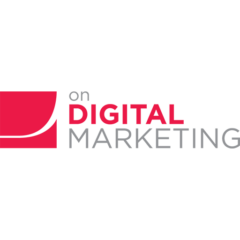How To Evaluate Social Media Tools
The constant shifting landscape of digital marketing means that a new shiny object is popping up on the scene every few months. Innovators and Early Adopters in the space tout it as the next Facebook or Twitter and if you believe the marketing press, you simply must be on this new platform to ensure your brand’s success.
Don’t buy it.
A common joke today in cynical marketing circles goes something like this:
Question: How do you spot a social media expert?
Answer: Anybody with an Internet connection and a keyboard.
Instead, question everything. Go back to your user persona and the data you’ve collected in the research exercises:
- Demographics
- Psychographics
- Interviews (current and potential users or customers)
- Social Technographics
- Search trends, results and keywords
- Social media mentions
Using this quantitative and qualitative data cross-reference against this new tool. Does it meet the business objectives? Does it fit it with where your brand and or company is trying to go?
And think a bit about what where this new technology itself is in relation to Rogers’ Technology Adoption Life Cycle. Do you feel this technology is still in the Innovator stage? Is your target market Innovators? How do you know? Does the tiny sliver this represents of the market make it worth the expense of adding this tool to the marketing mix?
Let’s start by examining a simple framework originally put forth by Forrester researchers in the book Groundswell called POST (People, Objectives, Strategy, Tools).
Using POST to evaluate social and digital technology.
From Groundswell (p. 67-69)
- People. What are your customers ready for? The Social Technographics Profile is designed to answer this question. What’s important is to assess how your customers will engage, based on what they’re already doing. Ignoring this and making guesses about your customers might work, but you might also build a whole social networking strategy only to find your customers are more likely to write review than join social networks.
- Objectives. What are your goals? Are you more interested in talking with the groundswell for marketing or in generating sales by energizing your best customers? The clarity of your objectives will make or break your strategy.
- Strategy. How do you want your relationships with your customers to change? Do you want customers to help carry messages to others in your market? Become more engaged with your company? Answering this question you can plan for desired changes up front and also figure out how to measure them once the strategy is under way. You’ll also need to prepare and get buy-in from people within your company who may be threatened by changes in these customer relationships.
- Technology. What applications should you build? After having decided on the first three, you can move on to pick appropriate technologies (blogs, wikis, social networks, etc.).
The POST framework outlined by Forrester syncs perfectly in line with our methodology to date for becoming effective digital marketers.
- We study our customer like a science experiment, continually asking “why so?”.
- Next, we work with management or company founders to identify where the business needs to go and how to maintain or increase profitability.
- The strategy flows out of these discussions and goals – clarity is a must here.
- Finally, we apply all these filters to the technology tools available and only pick ones that line up and can deliver results.
After all, our careers depend on delivering in this area and correcting the black hole perception of marketing expenses.

